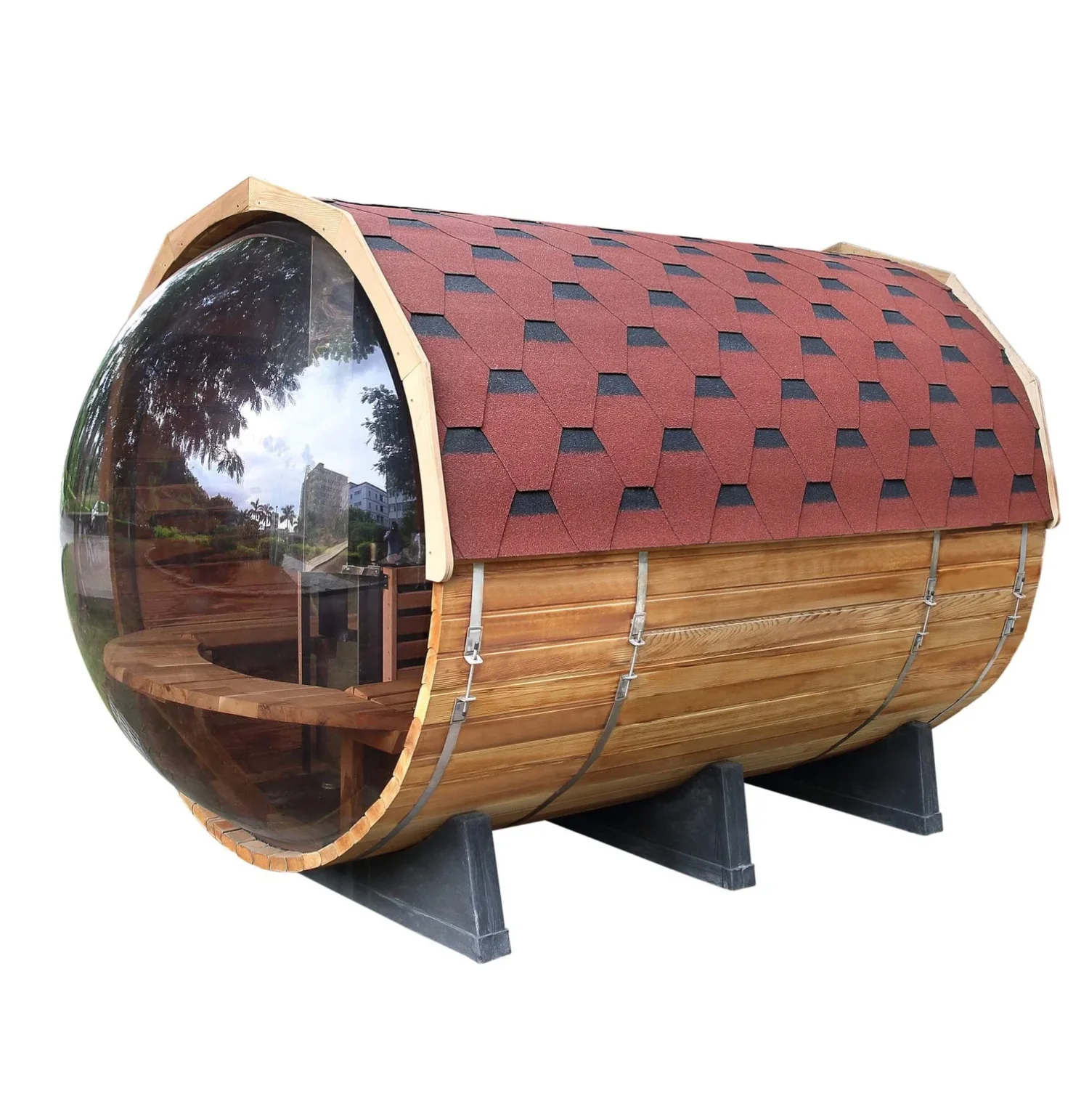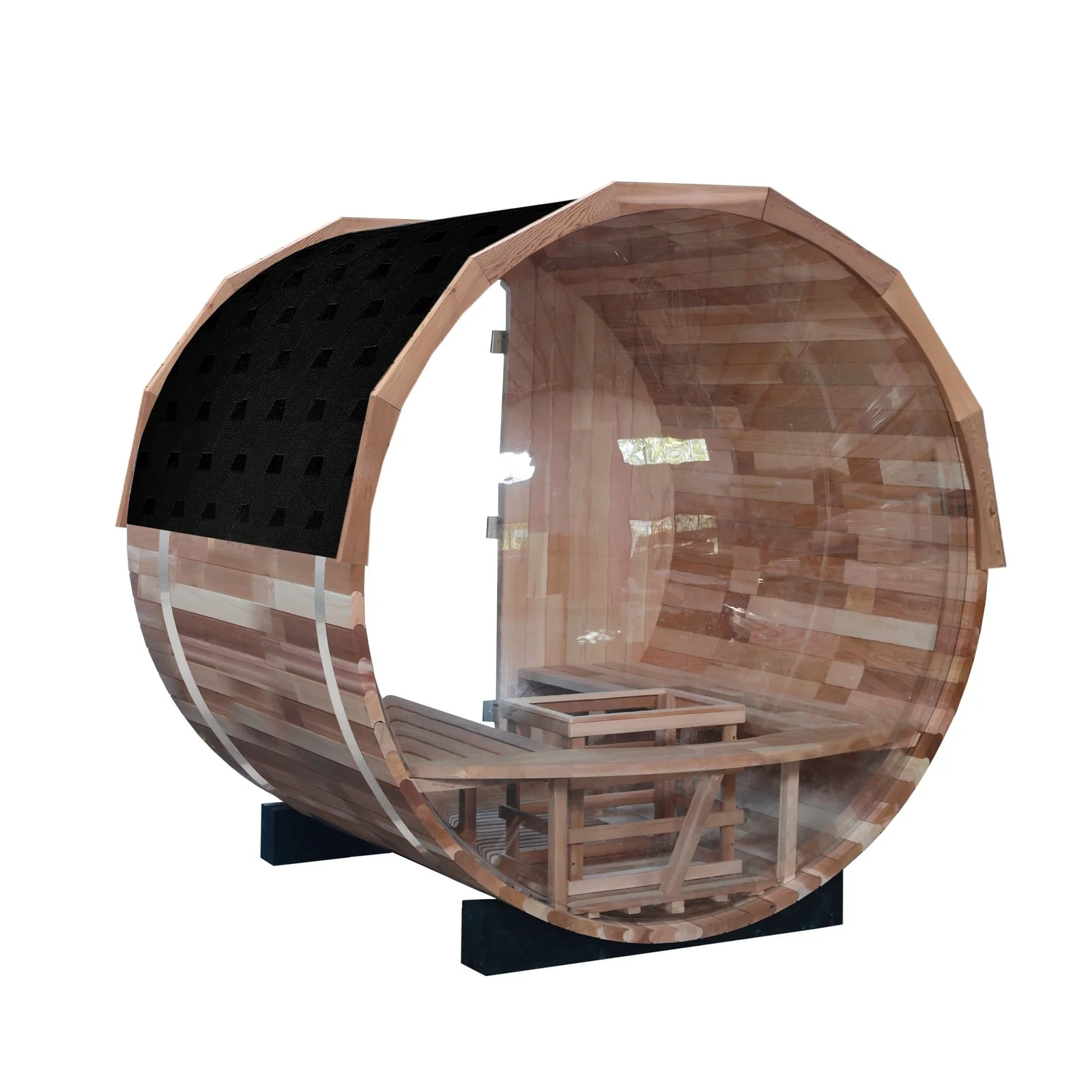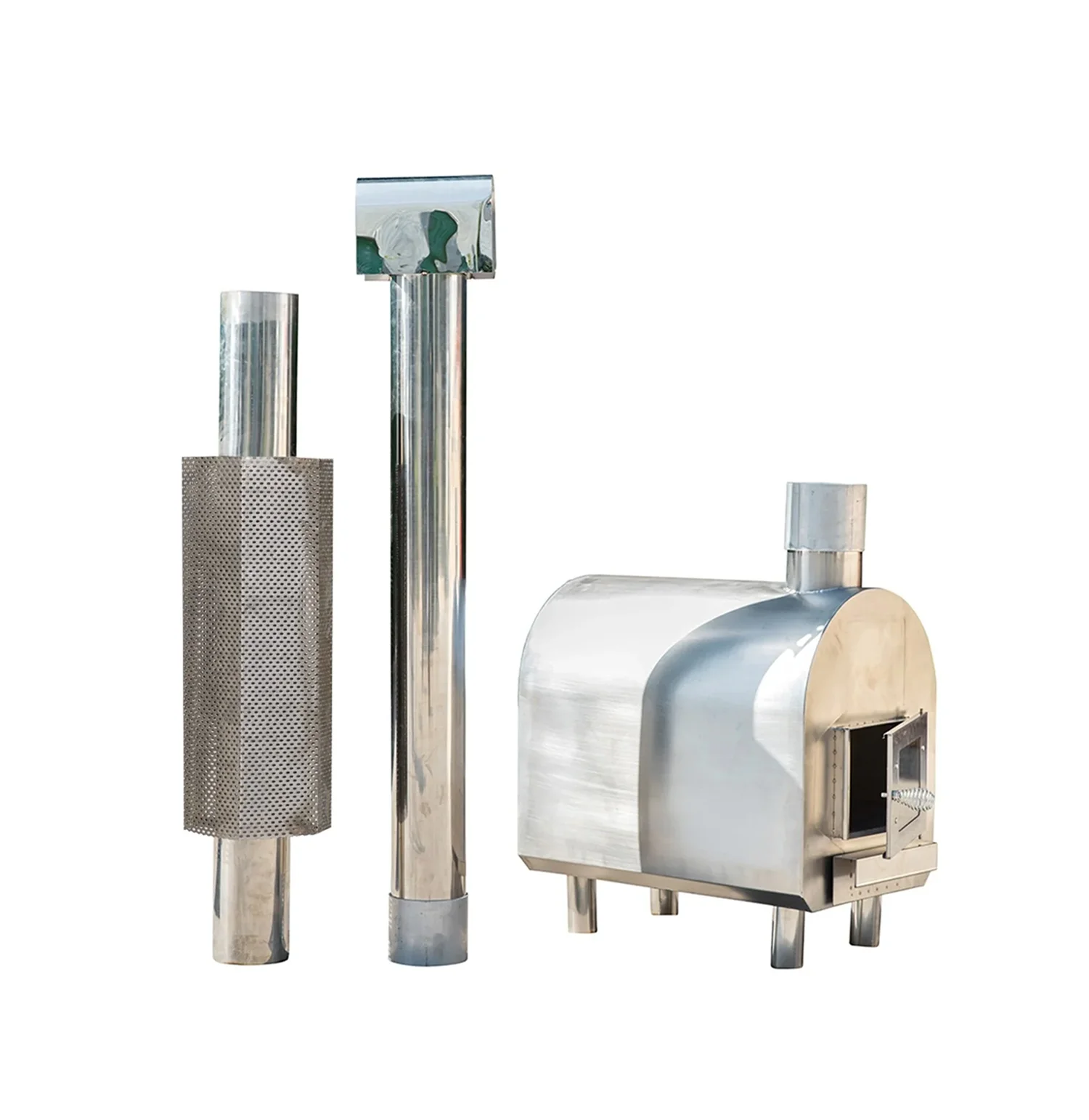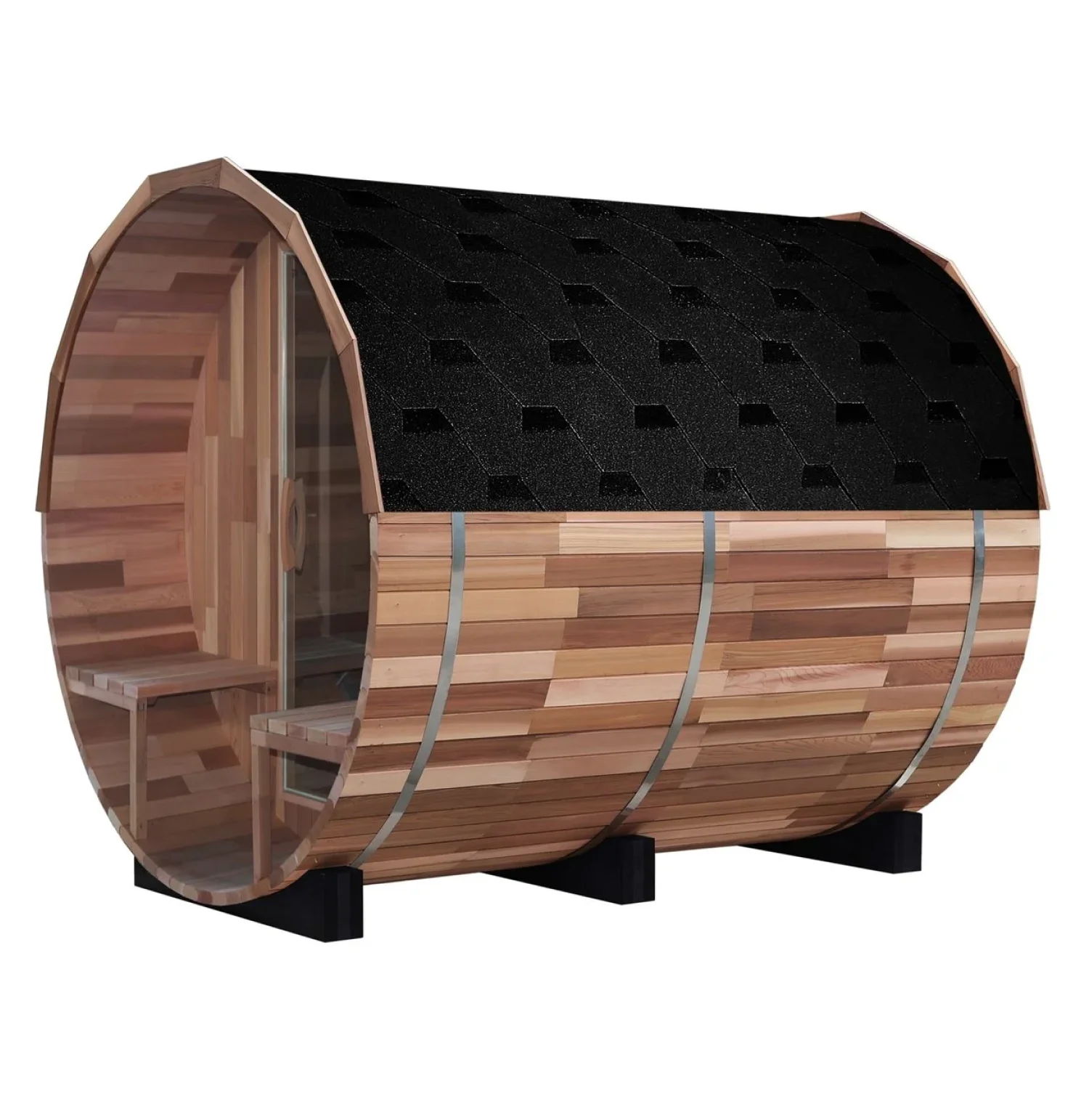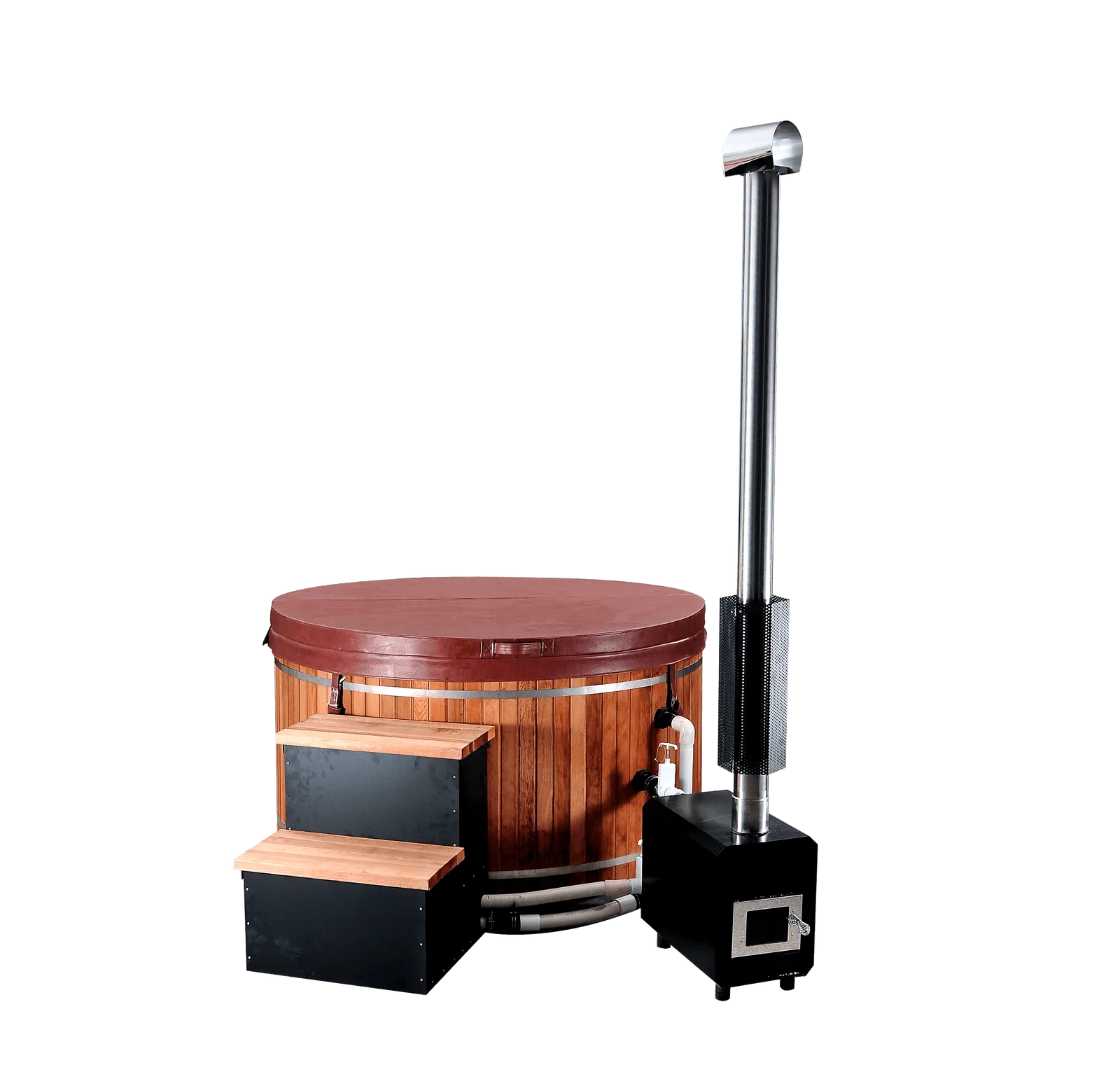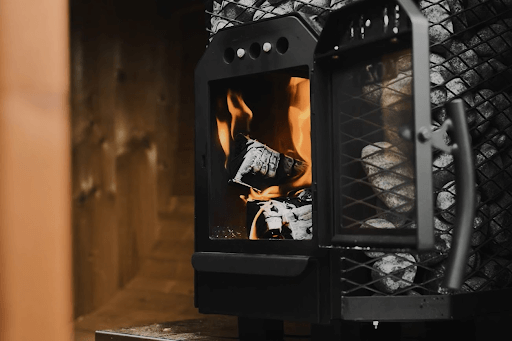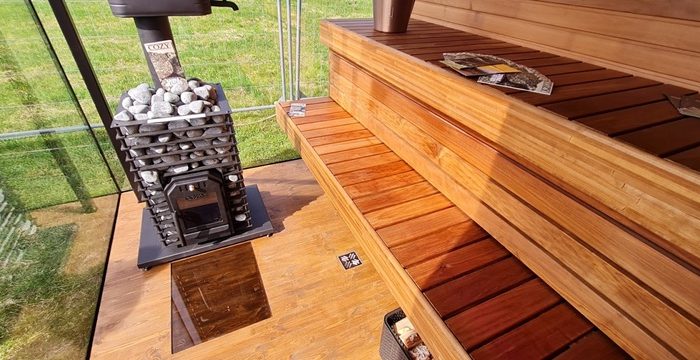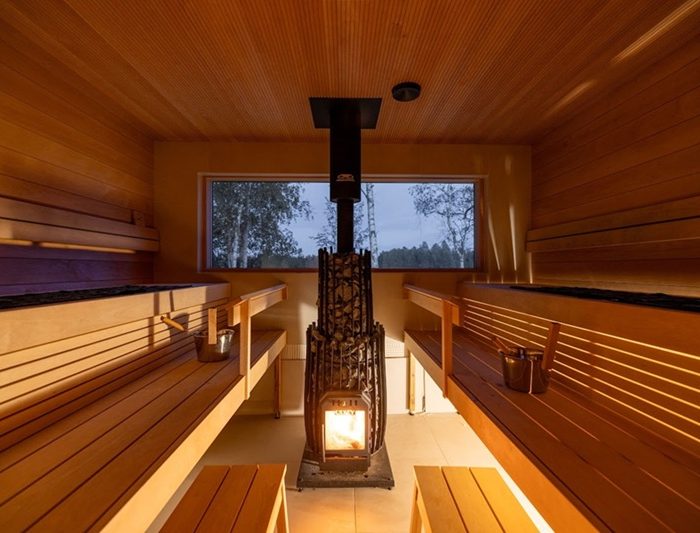Why People in NZ Look for Sauna Suits
In New Zealand’s temperate climate, outdoor exercise is popular year‑round. Many athletes and gymgoers explore gadgets that promise a performance edge or rapid weight loss. Sauna suits – waterproof outfits that trap body heat and make you sweat more – are sometimes marketed in NZ sports shops. They’re especially common among boxers and wrestlers looking to drop weight quickly. Yet misconceptions abound about what sauna suits actually do and how they compare with real saunas.
This article explains what a sauna suit is, summarises current research on their benefits and risks, and shows how to use one safely if you choose to. We’ll also contrast sauna suits with traditional Finnish‑style sauna bathing and suggest healthier alternatives for Kiwis who value comfort, connection and wellness. At the end you’ll find a competitor analysis comparing popular articles on this topic.
Looking for a healthier way to unwind? Discover Shym Saunas’ compact outdoor sauna cabins — perfect for Kiwi backyards and crafted for year-round use.
Key Takeaways
- A sauna suit is a heat‑trapping workout garment made of neoprene or PVC that looks like a tracksuit. Wearing one increases sweat loss and physiological strain during exercise.
- Research shows only modest gains – a small study found people exercising in a sauna suit improved VO₂ max and fat oxidation slightly but burned only 23 more calories than those wearing normal gear. There’s no evidence that sauna suits replicate the full benefits of traditional saunas.
- Risks include dehydration and overheating. Medical sources warn that sauna suits can cause hyperthermia, dizziness, heat exhaustion and even death if used improperly. Experts advise against wearing sauna suits in actual saunas.
- For a safe heat‑therapy experience, consider a real sauna instead of a sauna suit. Shym Saunas’ handcrafted European log saunas, square barrel saunas, round barrel saunas, and assembled saunas offer controlled temperatures, ergonomic seating and proper ventilation to maximise health benefits without the dangers of restrictive clothing.
What is a Sauna Suit?
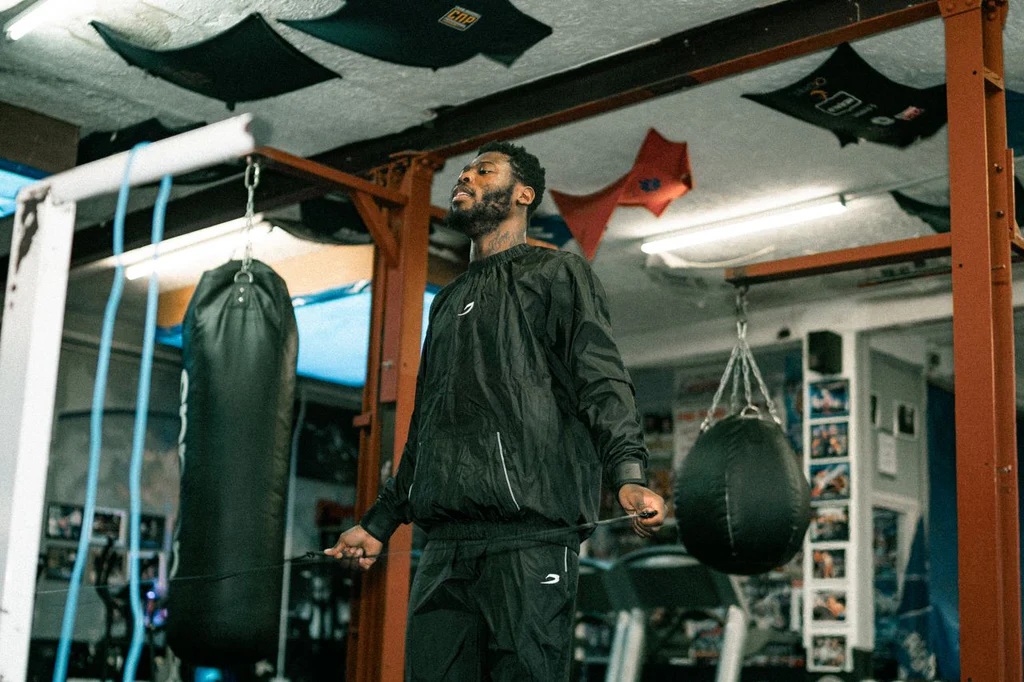
Source: BOXRAW
A sauna suit (sometimes called a sweat suit) is a two‑piece garment designed to retain heat and restrict airflow. Most models are made from neoprene, nylon or PVC and resemble a hooded tracksuit. When you exercise in one, your core temperature rises quickly and sweating increases. The concept is inspired by sauna bathing, but instead of heating the surrounding air the suit traps your own body heat.
How do sauna suits work?
By limiting evaporative cooling, a sauna suit pushes the body to work harder at thermoregulation. Studies show that wearing a sauna suit during moderate exercise elevates heart rate and body temperature, leading to greater fluid loss. This can create a small caloric expenditure but also increases physiological strain. Because heat cannot dissipate, muscles may warm faster during warm‑ups and acclimate to hot environments.
While sauna suits trap heat dangerously, Shym’s saunas create gentle, even warmth you can actually control — helping you sweat safely and restore deeply.
Typical uses
Sauna suits are popular among:
- Combat sports athletes trying to drop into a lower weight class before weigh‑ins.
- Endurance athletes seeking heat acclimation ahead of a race in warm conditions.
- People seeking rapid water‑weight loss for aesthetic reasons.
However, most research focuses on trained individuals. Studies rarely include older adults, people with chronic illness or beginners. For the average person, the risks may outweigh the marginal benefits.
Athletes might turn to sauna suits for weight-cuts, but for everyday wellness, nothing beats the restorative ritual of a proper Finnish-style sauna. Browse Shym’s collection of saunas, including log cabin saunas, and imagine one in your own backyard.
Do sauna suits offer measurable benefits?
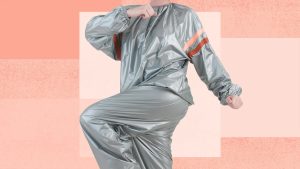
Source: Everyday Health
Small gains in VO₂ max and fat oxidation
One clinical trial compared participants who exercised in sauna suits with those who did identical workouts in normal clothing. After two weeks, the sauna‑suit group showed an 11.7 % improvement in VO₂ max and a 13.8 % decrease in body fat, versus 7.3 % and 8.3 % respectively in the regular‑clothing group. Another study observed that sauna‑suit wearers burned just 23 extra calories during an interval session. Participants also experienced slight increases in fat oxidation up to an hour post‑exercise.
These findings suggest that sauna suits may marginally enhance cardiovascular adaptations and post‑exercise metabolism. Yet the studies involved small sample sizes (often 14–20 young, fit participants). Results may not generalise to the wider population.
Myth vs. reality: weight loss and detox
Many marketing claims revolve around rapid weight loss and detoxification. Healthline notes that sauna‑suit manufacturers often promote weight loss and toxin removal through sweat. In reality:
- Weight loss from sweating is mostly fluid loss, which reverses once you rehydrate.
- Sweating releases only trace amounts of toxins – your kidneys and liver handle most detoxification.
Thus, sauna suits may help you drop water weight temporarily but won’t provide long‑term fat loss or detox benefits. Sustainable weight management still requires balanced diet and consistent exercise.
Forget “quick fix” sweat suits — Shym Saunas, including thermo-treated spruce outdoor saunas, create lasting routines that support circulation, muscle recovery and true relaxation.
Risks and Safety Considerations

Source: Ace Fitness
Dehydration and heat illness
Because sauna suits inhibit cooling, they can cause significant dehydration and overheating. WebMD warns that any activity raising core temperature can lead to heat‑related illness such as dizziness, faintness and heat exhaustion. Healthline adds that sauna suits increase physiological strain and sweat loss, potentially leading to hyperthermia, electrolyte imbalance and rhabdomyolysis.
Fatalities linked to misuse
In 1997, three collegiate wrestlers died after using sauna suits and other extreme weight‑cutting methods. Following these deaths, the NCAA banned sauna suits from competitive wrestling. This tragic history underscores why heat‑trapping gear must be used cautiously and under professional supervision.
Who should avoid sauna suits?
Medical experts recommend avoiding sauna suits if you:
- Have heart disease, high blood pressure or respiratory conditions.
- Are pregnant or recovering from illness.
- Are a beginner, an older adult or a child.
- Struggle to stay hydrated or are taking medications affecting thermoregulation.
Before incorporating a sauna suit into training, consult a healthcare professional. Always listen to your body and stop if you feel dizzy, nauseous or fatigued.
If the dangers of sauna suits sound like too much, step into safety: Shym Saunas’ log sauna cabins and summer house saunas (with loft options through Fellin) are designed for comfort, ventilation and balance — no risk of hyperthermia, just pure wellness.
How to use a sauna suit safely

Source: BOXRAW
If you decide to try a sauna suit, follow these guidelines to reduce risks:
- Stay hydrated. Drink water before, during and after your workout. Replace electrolytes lost through sweat.
- Limit session length. Start with short bouts (10–15 minutes) and never exceed 20–30 minutes of continuous use.
- Exercise in a cool environment. Avoid high‑heat environments; never wear a sauna suit in an actual sauna.
- Monitor your body. Watch for signs of overheating (headache, dizziness, cramping). Remove the suit immediately if symptoms appear.
- Use layering wisely. Wear lightweight, moisture‑wicking clothes underneath to absorb sweat while allowing you to quickly peel off the suit if necessary.
- Consult a professional. Work with a coach or medical provider, especially if using a sauna suit for athletic weight‑cutting or heat acclimation.
Feel free to read our ultimate guide on how to use a sauna like a pro, too.
Sauna suits vs. traditional saunas
Though both cause sweating, sauna suits and saunas are fundamentally different:
| Factor | Sauna suit | Traditional sauna |
| Heat source | Traps the heat your body produces during exercise. | Uses an external heater to warm the air and stones; you sit or lie down and absorb radiant and convective heat. |
| Environment | Restricts airflow around your skin; worn while exercising. | Well‑ventilated room with benches; humidity and temperature controlled. |
| Control over temperature | Difficult to regulate; overheating occurs quickly. | Temperature and humidity can be adjusted; session length is controlled. |
| Health benefits | Very modest improvements in VO₂ max and temporary water weight loss. | Proven benefits such as improved cardiovascular health, reduced blood pressure and chronic pain relief. |
| Risks | Dehydration, hyperthermia, heat exhaustion. | Generally safe when sessions are kept within 15–20 minutes and hydration is maintained. |
Our Thermotreated Spruce cabins and Red Cedar barrel saunas deliver authentic heat therapy proven to improve cardiovascular health — far beyond what a neoprene suit could ever offer. Can’t decide what type of sauna to buy? Our guide on the types of sauna and which ones are better might be able to help you.
Why real saunas are safer and more effective
Researchers note that regular sauna bathing (3–7 sessions per week) provides lasting cardiovascular and metabolic benefits. Unlike sauna suits, saunas let you control temperature and humidity, rest comfortably and cool down between rounds. (Read more about the benefits of sauna for skin here.)
At Shym Saunas, our cabins and barrel saunas (square and round) use thermotreated Nordic spruce and premium heaters to deliver efficient, even heat while maintaining a natural aesthetic. For those seeking true heat therapy and relaxation, a properly designed sauna is a far better choice than a neoprene suit.
Buying a sauna suit in New Zealand
Because sauna suits are essentially clothing, you can find them at sports retailers and online stores in NZ. Look for quality materials (neoprene tends to be more durable than cheap PVC) and ensure the sizing fits snugly without restricting movement. Remember that the garment’s function is to trap heat – any tears or loose seams will reduce efficacy.
Brand suggestions: invest in a real sauna instead
If your goal is to reap the health benefits of heat without the risks of dehydration and heatstroke, investing in a sauna is a wiser decision. Shym Saunas offers several compact, family‑ready cabins and barrel saunas perfect for New Zealand homes:
- Outdoor Sauna Thermo Treated Spruce PATIO XS – A compact (4–7‑person) thermotreated spruce sauna with split‑level benches and efficient heat, handcrafted in Europe. Ideal for small backyards.
- Outdoor Sauna Thermo Treated Spruce SERENITY ROUND CUBE MINI – This 3‑7 person round‑cube sauna delivers quiet luxury with panoramic glass and natural wood surfaces, making it a centerpiece for connection and wellness.
- Outdoor/Indoor Western Red Cedar Barrel Sauna with Panoramic Glass – A barrel sauna built from aromatic cedar that seats four. Its curved shape and glass front provide efficient heat circulation and an immersive view of your garden.
These saunas are built for connection and ritual, not just sweat. They encourage you to unwind, breathe and restore with friends and family – aligning with Shym Saunas’ ethos of creating moments that matter. And these are just a few examples of the many sauna options available at Shym Saunas – there are plenty more to suit different needs and spaces.
Additional topics and FAQ
Can sauna suits help with heat acclimation?
Some athletes use sauna suits during moderate workouts to prepare for competitions in hot climates. A study found that repeated use may improve the body’s ability to sweat earlier and reduce heart rate under heat stress. However, this should only be done under professional guidance.
How often should you use a sauna suit?
There is no standard frequency. Because of the risks, limit sauna‑suit workouts to a couple of sessions per week and ensure plenty of recovery time. If you feel overly tired or notice signs of dehydration, reduce or stop use.
Do sauna suits detox your body?
No. Sweating releases very small amounts of toxins. Your liver and kidneys handle detoxification. Any perceived “detox” is likely fluid loss.
Conclusion
Sauna suits are not magic devices; they simply make you sweat more. While they may provide minor boosts to cardiovascular fitness and heat acclimation, their use comes with considerable risks. Dehydration, electrolyte imbalance and heat illness are real dangers, and the tragic deaths of collegiate wrestlers led to an NCAA ban on sauna suits. Marketing claims about weight loss and detox are largely unfounded.
For New Zealanders seeking true wellness and connection, a real sauna offers a safer, more enjoyable and more effective experience. Shym Saunas’ handcrafted cabins and barrel saunas invite you to slow down, breathe deeply and share moments that matter. If you do choose to experiment with a sauna suit, do so under professional guidance, keep sessions short, hydrate diligently and listen to your body.
Ready to experience true wellness? Explore Shym Saunas’ handcrafted cabins and barrel saunas at shymsaunas.com.au and find your perfect sanctuary today.

